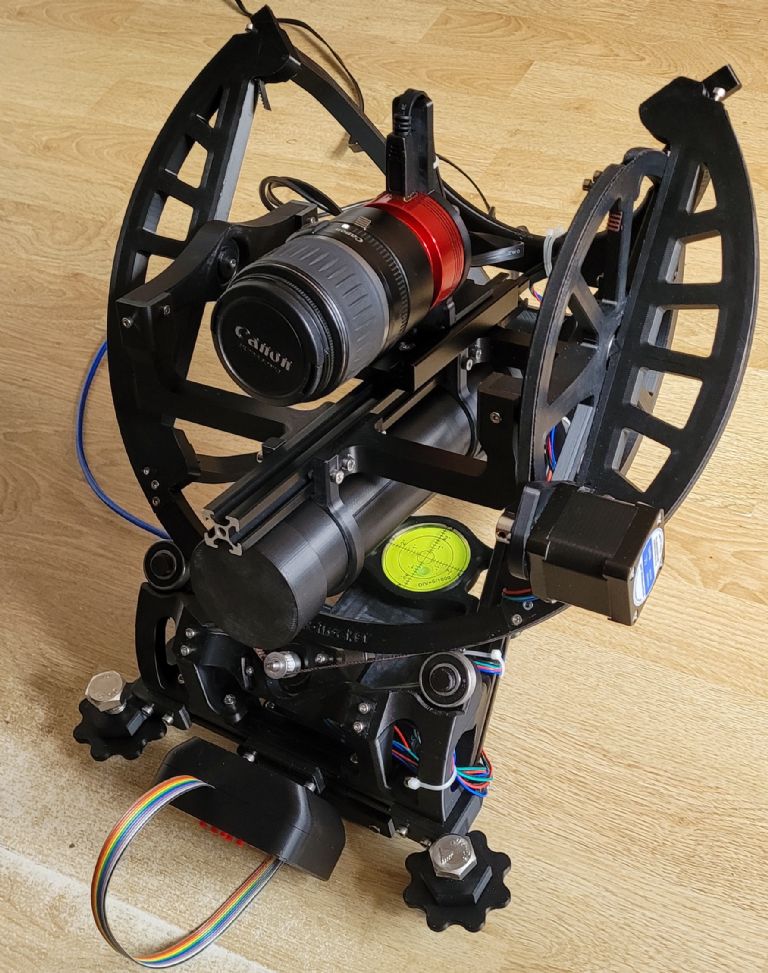I did print it myself. Although the instructions recommend PLA, I used ABS-X. I had some minor warping on some of the longer parts, so had to print with a brim to hold them down.
My print bed is 250×250 and some of the parts were getting close with the brim.
There is a test part to print to confirm printer accuracy.
I made the mistake of using heated threaded inserts where inserts were not meant to go, so ended up having to reprint a couple of parts.
Apart from that, it is a well documented project with a few build options. An online configurator determines for you the parts needed. All went together well. There are links to Discord and Reddit if help is needed.
The (optional) remote display is a bit of a pain as it just hangs on a bracket and can easily fall off. I have found the display useful for setting up the home position and polar alignment as the PC I am using for control is located indoors.
If you try to lift the OAT by the moving parts they come away from the base. Easy to put back but it is a bit of a pain, especially in the dark.
Using the enclosure that sits under the frame, there is not enough room to fit heatsinks to the driver boards. They did feel a little warm so I reduced the settings a bit.
I went with the larger bubble level option, and found this interfered with the electronics enclosure. Easily remedied by printing some spacers.
The firmware has an online configurator, and all programmed up and worked first time by following the instructions. I did have to change the configuration file because one of the motors was turning in the wrong direction. Videos on YouTube show how to check this.
I did briefly try to get it running from a Rasberry Pi with Astroberry, but hit problems. I am not that good with Linux so quickly gave up with this option.
I managed to get the OATControl, ASCOM, PHD2 and Stellarium installed under Windows 10 with nothing to report.
I did have some strange movements initially, with the thing moving to point in totally the wrong direction, or hitting the end of travel. This was due to me not setting the local sidereal time. After that all went well.
I did have a bit of a window in the clouds on Saturday evening. It was roughly aligned to the pole star then pointed at a bright one. The star could be seen moving across the guide scope at a fair rate. Turning tracking on, the star stayed in the same position on the screen.
I do not know what the errors were, as this was just a quick try. To be honest, I wasn't really expecting it to work first time. I didn't even try a calibration.
I am still waiting for the correct 0.9deg stepper motors to arrive.
I know nothing about astronomy, photography, RA & DEC coordinates, plate solving, siderial time, processing the images, etc. I suspect building it and getting it running will be the easy part and the difficult bit for me starts now.
It looks like the skies may be clear on Friday. If I have any luck, I will post the results.
Edited By IRT on 12/09/2022 17:46:53
 Neil Wyatt.
Neil Wyatt.




